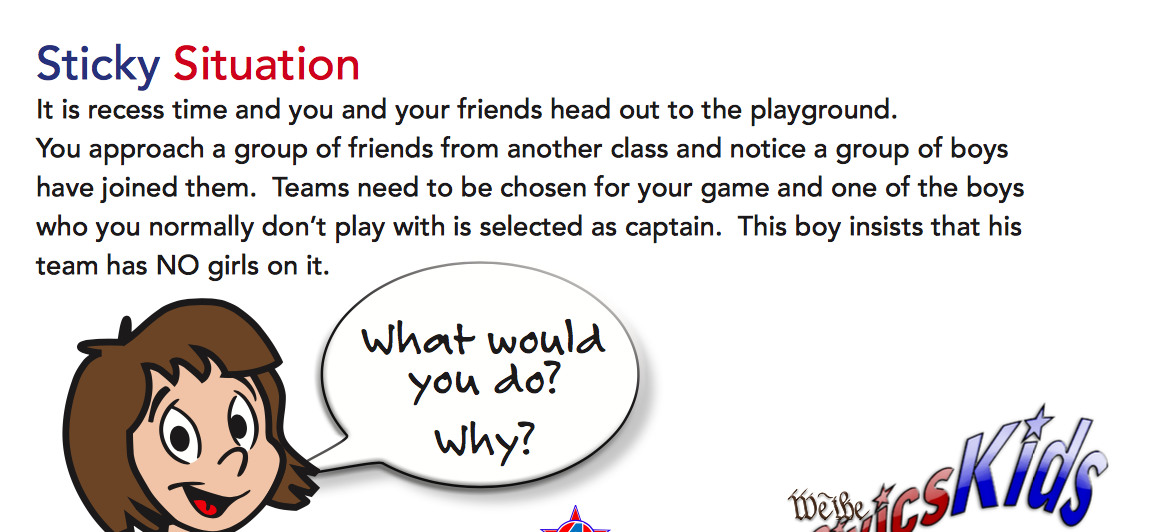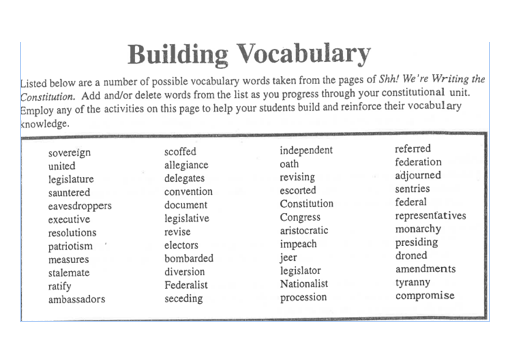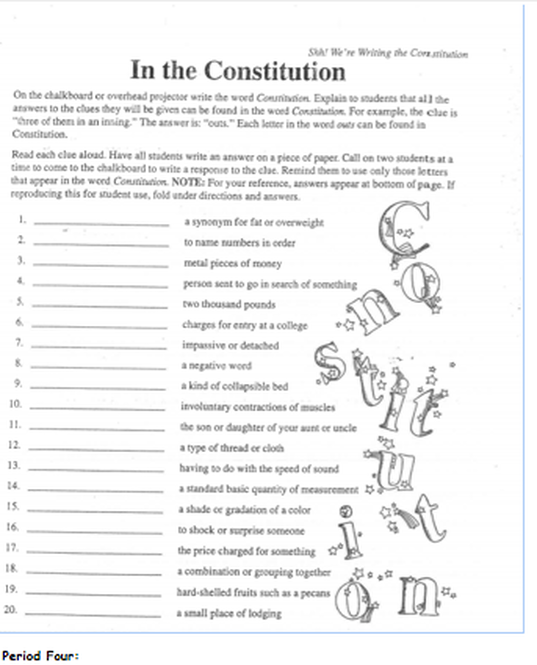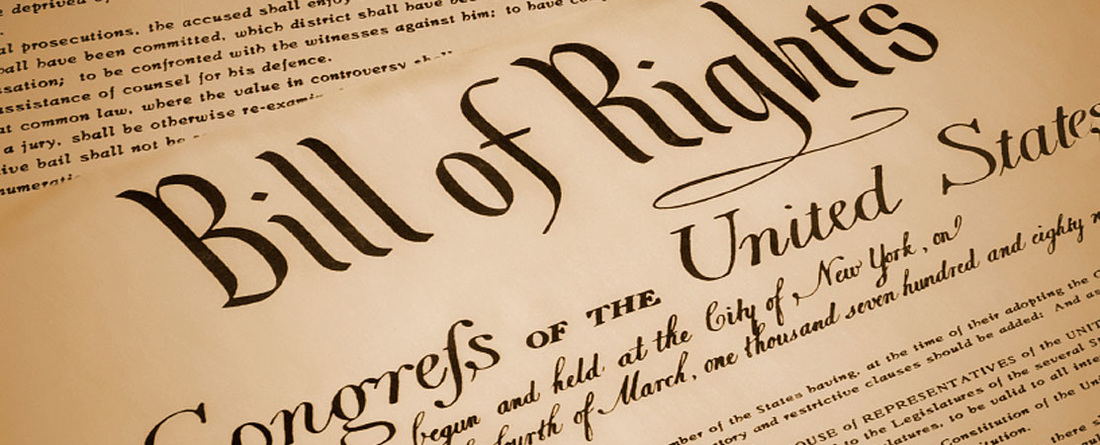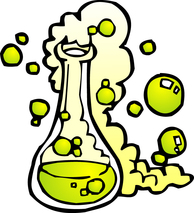SOCIAL STUDIES:
Students will be learning and researching about many wonderful and exciting topics across the year. Some of those topics include the geography of New York state, Native Americans: the First Inhabitants of New York State, Colonial and Revolutionary Periods, Freedom and the New Nation and Immigration, Industrialization and westward movement in New York state and much, much more. Many of these topics will be taught in cooperative group setting, where students can work together in order to create a presentation that utilizes research, writing and technology. We will be involved in a special global citizenship initiative. We will also stay up to date on all current events and important issues in the news that impact us locally, nationally and globally. Many of these projects will be assigned with websites attached and various resources for the students to use through their research. I will also post projects along with their rubrics on our class website so as to inform you of what your child is responsible for learning that particular month. We will utilize the IIM method and other research-critical thinking skills.
BILL OF RIGHTS: WATCH BRAIN POP BILL OF RIGHTS: https://www.brainpop.com/socialstudies/usgovernment/billofrights/
GO HERE: https://constitutioncenter.org/media/files/CK130001_CivicsKids-2013-PAGES-FNL-Lesson3.pdf IT’S OVERVIEW OF BILL OF RIGHTS
PART SIX: DUE FRIDAY, MAY 19: BILL OF RIGHTS- READ THE BILL OF RIGHTS PACKET AND visit the following websites for more info:
https://constitutioncenter.org/media/files/CK130001_CivicsKids-2013-PAGES-FNL-Lesson3.pdf
http://www.rightsofthepeople.com/education/government_for_kids/3-5/citizenship/responsibilities.php
http://teacher.scholastic.com/scholasticnews/indepth/constitution_day/inside/index.asp?article=billofrights
http://teacher.scholastic.com/scholasticnews/indepth/constitution_day/background/index.asp?article=billofrights
http://www.historyforkids.net/bill-of-rights.html
http://www.ducksters.com/history/us_bill_of_rights.php
1. RANK THE BILL OF RIGHTS AND GIVE YOUR REASONS FOR YOUR FIRST AND LAST CHOICES.
2. The Founding Fathers included freedom of speech, religion, and the press, among others. They also made sure citizens were free FROM certain things, such as searches and seizure of property.
If you were writing a Bill of Rights today, are there any rights you would add or exclude? What you like to be free from today?
3.
Time to look at our classroom or school rules and maybe make some changes or amendments. Is there a rule you would like added? Maybe there is a rule that you think should be changed in some way. Let’s Hear Your Voices! Write your idea on one Time to look at our classroom or school rules and maybe make some changes or amendments. Is there a rule you would like added? Maybe there is a rule that you think should be changed in some way. Let’s Hear Your Voices! Write your ideas down.
INTRO TO SHHH...WE'RE WRITING THE CONSTITUTION
THESE WEBSITES WILL HELP:
http://www.congressforkids.net/Constitution_index.htm
http://www.cyberbee.com/constitution/
http://www.congressforkids.net/Constitution_index.htm
http://www.cyberbee.com/constitution/
SHH...PART ONE-PAGES 7-13
Have students discuss the kinds of things that should be considered when making family rules and how rules are made in your families.
RESPONSE JOURNAL QUICK WRITE:
Write down three family rules which you feel are important and the consequences which you think should result if they are broken.
Shared reading of pages 7-13. As I read aloud, write down any questions you may have—aha moments, interesting ideas or whatever else you may wish to discuss. You may use post its to mark these places.
Review all of the following words:
IN YOUR RESPONSE JOURNAL:
Have students discuss the kinds of things that should be considered when making family rules and how rules are made in your families.
RESPONSE JOURNAL QUICK WRITE:
Write down three family rules which you feel are important and the consequences which you think should result if they are broken.
Shared reading of pages 7-13. As I read aloud, write down any questions you may have—aha moments, interesting ideas or whatever else you may wish to discuss. You may use post its to mark these places.
Review all of the following words:
- Constitution
- No account Yankees
- Lousy Buckskins
- Sovereign
- Poke fun allegiance
- Oath
- Dropped the idea
- Federation
- Delegates
- Articles of Confederation
- Smelt a rat
- Adjourn
- Scrape
- Spill the beans
- Suppose you were a Southerner and you met a “lousy Buckskin” who asked for your help or advice. How would you react and why?
- What did the word sovereign mean to the citizens?
- How did George Washington feel about the idea of “sovereign” states and why?
- Why did Congress write the Articles of Confederation?
- What was the Grand Convention in Philadelphia called together?
- How many states needed to be represented in order to conduct business?
- Where do you think Ben Franklin got his Chinese chair?
- How did James Madison serve the convention?
- How do you think the delegates communicated between the states?
- Why did the delegates want to keep their discussions and arguments secret?
IN YOUR RESPONSE JOURNAL:
- Write a summary of today’s reading.
- Write a response to what you read including any questions you may have.
Have students discuss the kinds of things that should be considered when making family rules and how rules are made in your families.
READ MORE ABOUT ALEXANDER HAMILTON: www.socialstudiesforkids.com/wwww/us/alexanderhamiltondef.htm
mrnussbaum.com/amrevolution/hamilton/
BILL OF RIGHTS PARTNERSHIP
Introduction
The first ten amendments to the U.S.Constitution are called the Bill of Rights. These amendments were written to protect the individual rights of all citizen. Through this activity, you should gain a fundamental understanding of what your rights are as citizens, and how this important document protects your liberties.
Task
You are a consultant to a United States senator who is serving on a committee to review the Bill of Rights. Having decided that some of the original bills are more applicable to today's society than others, the committee has decided to retain at least five of the ten original Bill of Rights amendments and also create several new ones to submit for ratification. Should this Bill of Rights revision succeed; the review committee feels the new and improved Bill of Rights might also be adopted by other countries such as Iraq as they seek to establish a democratic society that protects its citizen's rights. Clearly, the importance of this committee's proposal cannot be over stated!
You and ONE partner have been assigned the task of determining which five of the original ten Bill of Rights amendments must absolutely remain. You will also suggest which of theten amendments are least applicable to today's society. Your final task will be to propose at least 2 new revisions to be considered as additional amendments necessary to our modern society.
Task 1
Read the Bill of Rights. Take notes using the attached packet . Submit your completed packet for credit.
Task 2
The senate committee has established the following requirements for your project:
Paragraph 2 What group or groups of people would benefit from your amendment
Again,each proposal must be a minimum of 15 sentences.
Use the following cites to help you:
http://www.historyforkids.net/bill-of-rights.html
http://www.ducksters.com/history/us_bill_of_rights.php
http://www.congressforkids.net/games/billofrights/2_billofrights.htm
http://www.billofrightsinstitute.org/engage/student-resources/
https://www.brainpop.com/socialstudies/usgovernment/billofrights/
http://www.wartgames.com/themes/government/billofrights.html
MORE MATURE--BUT A GOOD READ: https://www.justice.gov/sites/default/files/usao-mn/legacy/2011/09/16/MN%20Civil%20Rights%20FINAL.pdf
The first ten amendments to the U.S.Constitution are called the Bill of Rights. These amendments were written to protect the individual rights of all citizen. Through this activity, you should gain a fundamental understanding of what your rights are as citizens, and how this important document protects your liberties.
Task
You are a consultant to a United States senator who is serving on a committee to review the Bill of Rights. Having decided that some of the original bills are more applicable to today's society than others, the committee has decided to retain at least five of the ten original Bill of Rights amendments and also create several new ones to submit for ratification. Should this Bill of Rights revision succeed; the review committee feels the new and improved Bill of Rights might also be adopted by other countries such as Iraq as they seek to establish a democratic society that protects its citizen's rights. Clearly, the importance of this committee's proposal cannot be over stated!
You and ONE partner have been assigned the task of determining which five of the original ten Bill of Rights amendments must absolutely remain. You will also suggest which of theten amendments are least applicable to today's society. Your final task will be to propose at least 2 new revisions to be considered as additional amendments necessary to our modern society.
Task 1
Read the Bill of Rights. Take notes using the attached packet . Submit your completed packet for credit.
Task 2
The senate committee has established the following requirements for your project:
- You must rank the amendments in the Bill of Rights in order of their relevance to today's society. Determine which five amendments are most important to our society and should absolutely be retained. Explain the need of each and its usefulness by researching its relevance in today's society. For each of the five you must provide a convincing argument for inclusion of the right. (For this step, complete the provided chart, or graphic organizer)
- Next, determine which, if any, amendments in the Bill of Rights seem out dated or no longer relevant to American society in 2016. Explain why these amendments should be considered for possible replacement. If you feel no amendment should be replaced you must explain your reasoning. (For this step there is also achart/graphic organizer to complete)
- Finally, write at least 2 proposals for additional amendments that you feel are necessary for our society in 2016. For each of the two new additions to the Bill of Rights, you must demonstrate the need for it by describing the societal issue or concern that the new right would address. Each proposal should be at least 15 sentences, typed, double spaced.
Paragraph 2 What group or groups of people would benefit from your amendment
Again,each proposal must be a minimum of 15 sentences.
Use the following cites to help you:
http://www.historyforkids.net/bill-of-rights.html
http://www.ducksters.com/history/us_bill_of_rights.php
http://www.congressforkids.net/games/billofrights/2_billofrights.htm
http://www.billofrightsinstitute.org/engage/student-resources/
https://www.brainpop.com/socialstudies/usgovernment/billofrights/
http://www.wartgames.com/themes/government/billofrights.html
MORE MATURE--BUT A GOOD READ: https://www.justice.gov/sites/default/files/usao-mn/legacy/2011/09/16/MN%20Civil%20Rights%20FINAL.pdf
| bill_of_rights_reading_student_notes__2_.doc | |
| File Size: | 29 kb |
| File Type: | doc |
| bill_of_rights_webquest_charts__1_.doc | |
| File Size: | 30 kb |
| File Type: | doc |
| bill_of_rights_webquest_chart_2.doc | |
| File Size: | 30 kb |
| File Type: | doc |
EvaluationYou will be required to submit the following:
WebQuest Task 1
Notes on the Bill of Rights
WebQuest Task 2
Senate requirement #1 Chart
Senate requirement #2 Chart
TWO proposals for additional amendments to be considered by the Senate. EACH proposalmust be two paragraphs long and at least 15 sentences, typed, double spaced. The first paragraph should describe the issue or social need for your proposed amendment. The second paragraph should explain what groups of people would benefit from such an amendment.
WE WILL CREATE A RUBRIC TOGETHER
WebQuest Task 1
Notes on the Bill of Rights
WebQuest Task 2
Senate requirement #1 Chart
Senate requirement #2 Chart
TWO proposals for additional amendments to be considered by the Senate. EACH proposalmust be two paragraphs long and at least 15 sentences, typed, double spaced. The first paragraph should describe the issue or social need for your proposed amendment. The second paragraph should explain what groups of people would benefit from such an amendment.
WE WILL CREATE A RUBRIC TOGETHER
BORN TO BE WILD:
·BORN TO BE WILD: I can learn more about the passionate work of two conservationists, Birute Galdikas and Daphne Sheldrick and compare and contrast their contributions. Objective: I can write a compare/contrast opinion essay by writing an on demand piece that answers the following focus question:
Who does a better job of working with the living things they are passionate about—Birute Galdikas or Daphne Sheldrick?
· Give your opinion that clearly answers the focus question.
· Use details and examples from both conservationists’ lives to support your opinion.
· Remember to state details that are similar and different.
· Write several paragraphs.
Structure you will use:
Paragraph 1: Introduce both conservationists and give your opinion on the focus question.
Paragraph 2: Discuss similarities between Dr. Galdikas and Dame Sheldrick using info from the video and online articles-resources you have read.
Paragraph 3: Discuss differences in their work.
Paragraph 4: Clearly state your opinion (make sure you give specific reasons) referring to the focus question.
Paragraph 5: Conclusion/restate your opinion with reasons you stated.
ALTERNATE: Who does a better job of working with the living things they are passionate about—Jane Goodall or Birute Galdikas?—same format. (But make sure you use info from reliable resources—books, magazines, online articles, etc.
Give your opinion that clearly answers the focus question.
·Use details and examples from both conservationists’ lives to support your opinion.
·Remember to state details that are similar and different.
·Write several paragraphs.
Structure you will use:
Paragraph 1: Introduce both conservationists and give your opinion on the focus question.
Paragraph 2: Discuss similarities between Dr. Galdikas and Dame Sheldrick using info from the video and online articles-resources you have read.
Paragraph 3: Discuss differences in their work.
Paragraph 4: Clearly state your opinion (make sure you give specific reasons) referring to the focus question.
Paragraph 5: Conclusion/restate your opinion with reasons you stated.
ALTERNATE: Who does a better job of working with the living things they are passionate about—Jane Goodall or Birute Galdikas?—same format. (But make sure you use info from reliable resources—books, magazines, online articles, etc.
Who does a better job of working with the living things they are passionate about—Birute Galdikas or Daphne Sheldrick?
· Give your opinion that clearly answers the focus question.
· Use details and examples from both conservationists’ lives to support your opinion.
· Remember to state details that are similar and different.
· Write several paragraphs.
Structure you will use:
Paragraph 1: Introduce both conservationists and give your opinion on the focus question.
Paragraph 2: Discuss similarities between Dr. Galdikas and Dame Sheldrick using info from the video and online articles-resources you have read.
Paragraph 3: Discuss differences in their work.
Paragraph 4: Clearly state your opinion (make sure you give specific reasons) referring to the focus question.
Paragraph 5: Conclusion/restate your opinion with reasons you stated.
ALTERNATE: Who does a better job of working with the living things they are passionate about—Jane Goodall or Birute Galdikas?—same format. (But make sure you use info from reliable resources—books, magazines, online articles, etc.
Give your opinion that clearly answers the focus question.
·Use details and examples from both conservationists’ lives to support your opinion.
·Remember to state details that are similar and different.
·Write several paragraphs.
Structure you will use:
Paragraph 1: Introduce both conservationists and give your opinion on the focus question.
Paragraph 2: Discuss similarities between Dr. Galdikas and Dame Sheldrick using info from the video and online articles-resources you have read.
Paragraph 3: Discuss differences in their work.
Paragraph 4: Clearly state your opinion (make sure you give specific reasons) referring to the focus question.
Paragraph 5: Conclusion/restate your opinion with reasons you stated.
ALTERNATE: Who does a better job of working with the living things they are passionate about—Jane Goodall or Birute Galdikas?—same format. (But make sure you use info from reliable resources—books, magazines, online articles, etc.
Intro to American Revolution webquest: http://smathi31.wix.com/americanrevolution#!about/cjg9
I can understand the causes, events, and results of the American Revolution by working on an American Revolution webquest
COMPONENTS OF AMERICAN REVOLUTION WEBQUEST FOR YOU TO COMPLETE:
| american_revolution_webquest_components.docx | |
| File Size: | 123 kb |
| File Type: | docx |
BIRCHBARK HOUSE WEBQUEST:
Ojibwa, Anishinabe, Chippewa Webquest
Type in the following web address
http://nativeamericans.mrdonn.org/index.html
Under North America click on Northeast Woodland and then click on Ojibwa/Chippewa in Olden Times
Click on What did the Ojibwa/Chippewa eat?
Click the back button and click on and read How did the Ojibwa/Chippewa live?
9.Why were canoes so important to the Ojibwa culture?
Click the back button and click on and read about Wigwams
10.Describe what a wigwam looked like?
11.How is a wigwam different from a tepee?
Click the back button and click on and read about The Arrow Maker
12. Why did the Ojibwa mark their arrows?
Click the back button and click on and read about Picture Messages
13. Why were pictographs so important to the Ojibwa?
Click the back button and click on and read about Night Messages
14.What were night messages? How did they enforce good behavior?
Click the back button and click on and read about Ojibwa Kids
15.Why were Ojibwa children taught to be still and quiet?
16.What did charcoal sad faces mean?
Click the back button and click on and read about Religion
17.What did the Ojibwa believe about spirits?
18.Could songs be medicine?
Click the back button and click on and read about Dream Catchers
19. What were dream catchers designed to do?
20. How did bad dreams disappear?
Type in the following web address
http://nativeamericans.mrdonn.org/index.html
Under North America click on Northeast Woodland and then click on Ojibwa/Chippewa in Olden Times
Click on What did the Ojibwa/Chippewa eat?
- What type of food items did the Ojibwa add maple syrup to?
- What was the main season for fishing? How did the Ojibwa let people know not to overfish an area?
- Why was rice an important food to the Ojibwa?
- What types of animals did the Ojibwa hunt?
Click the back button and click on and read How did the Ojibwa/Chippewa live?
- What did the Ojibwa call families?
- How were Ojibwa people given names?
- Who were young couples suppose to live with after getting married?
- Explain some of the important manners for Ojibwa children.
9.Why were canoes so important to the Ojibwa culture?
Click the back button and click on and read about Wigwams
10.Describe what a wigwam looked like?
11.How is a wigwam different from a tepee?
Click the back button and click on and read about The Arrow Maker
12. Why did the Ojibwa mark their arrows?
Click the back button and click on and read about Picture Messages
13. Why were pictographs so important to the Ojibwa?
Click the back button and click on and read about Night Messages
14.What were night messages? How did they enforce good behavior?
Click the back button and click on and read about Ojibwa Kids
15.Why were Ojibwa children taught to be still and quiet?
16.What did charcoal sad faces mean?
Click the back button and click on and read about Religion
17.What did the Ojibwa believe about spirits?
18.Could songs be medicine?
Click the back button and click on and read about Dream Catchers
19. What were dream catchers designed to do?
20. How did bad dreams disappear?
THE STORY OF STUFF: storyofstuff.org/movies/story-of-stuff/
| storyofstuff_factsheet.pdf | |
| File Size: | 151 kb |
| File Type: | |
| story_of_stuff.pdf | |
| File Size: | 616 kb |
| File Type: | |
PLEASE COMPLETE THE FOLLOWING BY NEXT FRIDAY, DECEMBER 9:
WRITE A NARRATIVE RESPONSE TO THE VIDEO IN WHICH YOU ADDRESS THE FOLLOWING:
- What questions do you have about the video? Is there anything you wonder about the narrator or the things she’s saying? • Do you think she’s biased (that is, does she seem to have a particular opinion about these issues)? • What effect did the pictures in the video have on you as a viewer? • How does this video make you feel? • What did you learn? Did the film change your mind about anything, or make you reflect on anything in your own life?
- You may take notes but you will be provided with a fact sheet and annotated script in order to provide a meaningful response that answers all of the above questions.
- Extension activity-assessment: •Locate three items in your home while thinking about this video. Research each item and write a paragraph including:
- what the item cost when it was new, where it was made, how old the item is (approximate) and how often the item is used. Then write a paragraph on how those three items connect to the video and ways you could consume less in the future
CHECK THESE OUT, TOO: ny.pbslearningmedia.org/collection/lpsc/
WONDEROPOLIS LINK & RESPONSE FORM: wonderopolis.org/
| wonderopolis.doc | |
| File Size: | 50 kb |
| File Type: | doc |
JANE GOODALL DOCUMENTARY RESPONSE ACTIVITY: www.brainpop.com/science/famousscientists/janegoodall/
I can respond thoughtfully and critically to Wild Chimps (Jane Goodall—part of our unit on Heroes) Intro to Critical viewing sheet: PLEASE RESPOND THOUGHTFULLY AND THOROUGHLY TO THE FOLLOWING QUESTIONS:
1. Identify the people, places, events, or aspects of people, society, or nature that are the focus of this film. Describe and clarify the significance of each.
2. What does this documentary mostly about? If you had to identify a theme-main idea—what would it be and why?
3. List six facts described in the film that impressed you and explain how each fact relates to the film’s premise or theme. YOU SHOULD ALSO ADD YOUR INSIGHT--MEANING YOUR FEELINGS-REACTION TO EACH FACT...EX: THIS FACT MAKES ME THINK....
4. Nonfiction can enrich viewers in several important ways. Describe an part of the film that showed you something you hadn’t seen before, caused you to think in a new way, or helped you understand something more thoroughly than before. In addition, describe how it changed your thinking.
5. What questions do you have about Jane Goodall? List at least two and begin to investigate at least one. SHOW PROOF OF INVESTIGATION.
1. Identify the people, places, events, or aspects of people, society, or nature that are the focus of this film. Describe and clarify the significance of each.
2. What does this documentary mostly about? If you had to identify a theme-main idea—what would it be and why?
3. List six facts described in the film that impressed you and explain how each fact relates to the film’s premise or theme. YOU SHOULD ALSO ADD YOUR INSIGHT--MEANING YOUR FEELINGS-REACTION TO EACH FACT...EX: THIS FACT MAKES ME THINK....
4. Nonfiction can enrich viewers in several important ways. Describe an part of the film that showed you something you hadn’t seen before, caused you to think in a new way, or helped you understand something more thoroughly than before. In addition, describe how it changed your thinking.
5. What questions do you have about Jane Goodall? List at least two and begin to investigate at least one. SHOW PROOF OF INVESTIGATION.
ELECTION SCRAPBOOK RUBRIC:
| electionscrpabookrubric.doc | |
| File Size: | 31 kb |
| File Type: | doc |
ROOTS AND SHOOTS: INTRO TO COMMUNITY MAPPING
Roots and Shoots- Intro to Community Mapping 101: I can assess my Community Needs and Potential Resources by using a strategy called community mapping, We need to begin to start thinking about issues that we care about. Issues that we have compassion for and are passionate about and may want to help resolve. We want to try to categorize them into categories that involve people, animals and the environment: For ex: I notice how much food is thrown away in lunchroom and by restaurants and wonder what can be done to bring some of this food to hungry folks. So I would put this under the category of people—and the issue is hunger. As an animal lover, it makes me sad when I see stray cats and it seems they are always having more kittens. So I wonder if we are doing enough to contain the homeless pet population and would like to do something to help reduce numbers. I would put this under the category of animals. Sometimes it goes together—sometimes I get really sad when I see homeless people but extra sad when I see them with homeless animals. So that can be an overlapping category—homeless people and their pets. So let’s begin generating a list under these three categories and then for homework tonight, choose a topic and begin writing about it in narrative form. Also, stop and jot two questions you have that may relate to your issue.
Students will explore their communities to: · Learn the geography and layout of their local area; · Determine areas of need for people, animals, and the environment; and · Identify potential resources that may support efforts to meet community needs.
Our Roots and Shoots facilitator will be in later this week to launch the actual community mapping activity. During the next few days we will get ready by becoming expert observers by taking a “bird’s eye perspective” of what is going on in our neighborhoods. So while you are on the bus, walking or in the car, consider all of the following GUIDING QUESTIONS:
Guiding Questions: 1. What are the roads around your school? Are there any major intersections near your school?
2. Notice the cars and people walking outside, imagine where they are going and what they do to have fun, where they work, eat, sleep etc.
3. Do you see animals, wild or domestic? Where do they go during the day? Where do they get their food, where do they play or go when they are sick?
4. Do you see any plants or trees on your way to school? Who waters them and how did they get there? What makes them important to your community?
THIS IS WHERE WE ARE HEADED:
Students will explore their communities to: · Learn the geography and layout of their local area; · Determine areas of need for people, animals, and the environment; and · Identify potential resources that may support efforts to meet community needs.
Our Roots and Shoots facilitator will be in later this week to launch the actual community mapping activity. During the next few days we will get ready by becoming expert observers by taking a “bird’s eye perspective” of what is going on in our neighborhoods. So while you are on the bus, walking or in the car, consider all of the following GUIDING QUESTIONS:
Guiding Questions: 1. What are the roads around your school? Are there any major intersections near your school?
2. Notice the cars and people walking outside, imagine where they are going and what they do to have fun, where they work, eat, sleep etc.
3. Do you see animals, wild or domestic? Where do they go during the day? Where do they get their food, where do they play or go when they are sick?
4. Do you see any plants or trees on your way to school? Who waters them and how did they get there? What makes them important to your community?
THIS IS WHERE WE ARE HEADED:
- Identify the following things you like about your community: One quality about your community that makes it a great habitat for people
- One quality about your community that makes it a great habitat for animals
- One quality about your community that makes it a great environmental habitat
- Is your community meeting the basic needs of people and animals?
- Is your community environmentally sustainable?
- Identify areas of improvement for you community:
- One quality your community could improve to make it a better habitat for people
- One quality your community could improve to make it a better habitat for animals
- One quality your community could improve to make it a better environmental habitat.
OCTOBER-EARLY NOVEMBER: EARLY NATIVE AMERICANS OF NY: How did Native Americans influence the development of New York?
How did Native Americans use New York States’ natural resources to meet their basic needs?
How did the structure of New York State Native American life result in complex, self-sustaining communities?
WHY DO WE STUDY THE PEOPLE OF LONG AGO?
I can become an informed citizen by learning about the presidential election process.
WEBQUEST: http://zunal.com/webquest.php?w=170436
Have you ever wondered what it was like to be an Algonquin or an Iroquios? Wouldn't it be fun to pretend that you were actually one of them? Now is your chance! First, you will pair up with a partner. Then, between the two of you, one will choose to be an Algonquin and one will choose to be an Iroquios member. Next, you will explore all there is to know about either being an Algonquin or an Iroquois member including, how they lived, where they lived, what jobs they did, what they ate, and much more! You will then share with your partner all that you learned about being an Algonquin or Iroquois member. In the end, you will write a journal entry about a day in the life of an Algonquin or an Iroquois member! You will describe what you did that day and what your day was like! Enjoy and have a great experience!
TASKS: COMPLETE ALL SECTIONS OF THE WEBQUEST INCLUDING QUESTIONS, JOURNAL ENTRY AND CONCLUSION QUESTION. IN ADDITION, YOU WILL ALSO COMPLETE A VENN DIAGRAM THAT DISCUSSES AT LEAST FIVE IMPORTANT SIMILARITIES AND 5 IMPORTANT DIFFERENCES.
WEBSITE FOR ALGONQUINS: http://www.bigorrin.org/algonquin_kids.htm
SONG OF THE HERMIT THRUSH-SONG OF MYSELF ACTIVITY: (WEDNESDAY)
| songofthehermitthrushnativeamericanfolktalepoetrylink.pdf | |
| File Size: | 180 kb |
| File Type: | |
ENCOUNTER: link to story online: https://www.youtube.com/watch?v=NSRvWlCwlKU
PLEASE NOTE, IF YOU CHOOSE TO DO I AM POEM, CREATE AT LEAST TWO--ONE FROM TAINO AND THE OTHER FROM EUROPEAN-COLUMBUS PERSPECTIVE--ADD IMAGES, TOO
| encounter.ppt | |
| File Size: | 5982 kb |
| File Type: | ppt |
Your browser does not support viewing this document. Click here to download the document.
| encounterjaneyolenwritingpromptwithgraphicorganizer.pdf | |
| File Size: | 167 kb |
| File Type: | |
CURRENT EVENTS RUBRIC:
| news-currenteventsrubricgrade4.doc | |
| File Size: | 44 kb |
| File Type: | doc |
-WHAT DOES IT MEAN TO SUMMARIZE? (FACTS-YOUR BRAIN)-SHOULDN'T BE MORE THAN 50 WORDS AND NO LESS THAN 35-40 WORDS.
- TELL WHAT THE ARTICLE IS MOSTLY ABOUT.
- FOCUS ON MOST IMPORTANT INFORMATION (NOT NECESSARILY THE MOST INTERESTING)
- TELL ABOUT WHAT ARTICLE TAUGHT ME-MAIN IDEA-WHAT DOES IT TEACH ME?-ANGLE (THEME-BIG IDEA OF A NON-FICTION TEXT ESPECIALLY A MAGAZINE OR NEWS ARTICLE)
- INCLUDES WHO, WHAT, WHEN, WHERE, WHY AND HOW
- WHAT DO YOU THINK ABOUT THE STORY? WHY? GIVE SUPPORTING EVIDENCE.
- TEXT TO TEXT CONNECTION
- TEXT TO WORLD CONNECTION
- HOW DOES THIS STORY MAKE ME FEEL? WHY?
- WHAT IS YOUR OPINION? WHAT DOES IT MAKE YOU THINK OR WONDER ABOUT? WHY?
CURRENT EVENTS FORMS:
| currenteventsform.doc.docx | |
| File Size: | 19 kb |
| File Type: | docx |
ELECTION SCRAPBOOKS:
| whataretheissues.pdf | |
| File Size: | 614 kb |
| File Type: | |
Your assignment is to make a scrapbook of the 2016 Presidential campaigns and election. This scrapbook will be your souvenir of the United States President elected the year you were in 4th grade!
Each scrapbook will look different. Your scrapbook can be made with construction paper, loose-leaf paper, a binder, a notebook, or a scrapbook. Inside your scrapbook, you will glue clippings and pictures from the campaign and election. Try to date your materials and add captions. Be creative! J You may get help from an adult, but try to do as much as you can on your own. Start collecting articles and materials now! DON’T WAIT UNTIL THE LAST MINUTE!! You can get articles and pictures from magazines, newspapers and the internet. We will be working together on this in class as well.
Here’s what needs to be included:
3 articles about each Presidential candidate with your response to each article.
1 article about each Vice-Presidential candidate with your response to each article.
4 articles each about any other story that relates to the presidential election or candidates with a summary and response—YOU WILL HAND ONE OF THESE IN ON THIS THURSDAY, September 29
An information sheet about both candidates and where they stand on the following issues: education, health care, taxes, economy &jobs, defense. Next to each issue, tell which candidate you agree with and why.
A good persuasive 2-3 paragraphs telling which candidate you would choose and why.
The last entry in your scrapbook needs to be something showing the election results and your response.
Be sure to include any photos, stories, headlines or campaign stickers you find interesting. HAVE AT LEAST THREE PHOTOS WITH YOUR OWN CAPTIONS!!!
Election Day is Tuesday, November 8. Your scrapbook will be due no later than Tuesday, November 15. I want you to have fun with this project! You will be graded on neatness, overall appearance and thoroughness.
Each scrapbook will look different. Your scrapbook can be made with construction paper, loose-leaf paper, a binder, a notebook, or a scrapbook. Inside your scrapbook, you will glue clippings and pictures from the campaign and election. Try to date your materials and add captions. Be creative! J You may get help from an adult, but try to do as much as you can on your own. Start collecting articles and materials now! DON’T WAIT UNTIL THE LAST MINUTE!! You can get articles and pictures from magazines, newspapers and the internet. We will be working together on this in class as well.
Here’s what needs to be included:
3 articles about each Presidential candidate with your response to each article.
1 article about each Vice-Presidential candidate with your response to each article.
4 articles each about any other story that relates to the presidential election or candidates with a summary and response—YOU WILL HAND ONE OF THESE IN ON THIS THURSDAY, September 29
An information sheet about both candidates and where they stand on the following issues: education, health care, taxes, economy &jobs, defense. Next to each issue, tell which candidate you agree with and why.
A good persuasive 2-3 paragraphs telling which candidate you would choose and why.
The last entry in your scrapbook needs to be something showing the election results and your response.
Be sure to include any photos, stories, headlines or campaign stickers you find interesting. HAVE AT LEAST THREE PHOTOS WITH YOUR OWN CAPTIONS!!!
Election Day is Tuesday, November 8. Your scrapbook will be due no later than Tuesday, November 15. I want you to have fun with this project! You will be graded on neatness, overall appearance and thoroughness.
HOMELESSNESS RESOURCES (IN ADDITION TO NEWSELA)-WE WILL BE UPDATING:
NEWSELA-USE YOUR PS 165Q NET TO SIGN IN AND THIS CODE: KGKSV3
https://newsela.com/signin/?next=/people/classrooms/911078/quickstart/
HOW DID THE AMERICAN REVOLUTION AFFECT CITIZENS' LIVES IN NEW YORK? http://smathi31.wix.com/americanrevolution#!about/cjg9
Essential Questions: What were the causes, events, and results of the American Revolution? How did certain individuals influence and affect the American Revolution? How do I use a variety of resources to gain information about an individual? What does the slogan, “No Taxation without Representation” mean and how does it apply to the American Revolution? What was the Stamp Act and how did it influence the American Revolution? How did the French and Indian War contribute to the revolutionary movement? What happened at Fort Ticonderoga in New York? Why was NY an important colony during the American Revolution?
FRENCH INDIAN WAR LINKS: http://www.ducksters.com/history/colonial_america/french_and_indian_war.php
REVISE JOURNAL ENTRIES SO THEY ARE A MINIMUM OF ONE TYPED PAGE-FONT SIZE SHOULD NOT BE LARGER THAN 12. WRITE IN PARAGRAPHS. ANY SHIFT IN TIME, SPACE OR IDEA...CHANGE PARAGRAPH...INCLUDE GRAPHICS AND A MINIMUM OF THREE POWER-VOCABULARY WORDS...DO NOT WRITE A "GROCERY LIST" (MEANING A NUMBERED LIST OF ACTIVITIES YOU DO IN YOUR DAY. PLEASE WRITE IN NARRATIVE FORMAT).
LANDFORM GEOGRAPHY:
CURRENT EVENTS RUBRIC:
SUMMARY AND RESPONSE TO INFORMATIONAL TEXT:
SAMPLE SUMMARY:
PEOPLE IN THE NETHERLANDS ARE VISITING TWO NEW POP UP SAND HOTELS CONSTRUCTED OF MORE THAN 2,000,000 POUNDS OF SAND….THEY WERE BUILT TO COINCIDE WITH THE SAND SCULPTING FESTIVAL THAT TAKES PLACE EACH YEAR IN OSS & SNEEK…MORE THAN 30 MAGNIFICENT SCULPTURES WERE BUILT INCLUDING THE GREAT WALL OF CHINA….
REDUCING OUR CARBON FOOTPRINTS:
REGISTER HERE FIRST AND TAKE THE QUIZ: http://meetthegreens.pbskids.org/features/carbon-calculator.html
INCONVENIENT TRUTH FINAL ACTIVITIES: DUE WEDNESDAY, MAY 28TH
| documentarfilm-study-worksheet-documentary.doc | |
| File Size: | 33 kb |
| File Type: | doc |
EXTRA CREDIT: MOVIE REVIEW OF INCONVENIENT TRUTH. PLEASE USE THE FOLLOWING RESOURCES TO ASSIST YOU. A COPY OF THE DOCUMENTARY RESPONSE AND MOVIE REVIEW (SHOULD YOU DECIDE TO DO IT, SHOULD GO IN YOUR HUMANE ED SCRAPBOOKS):
Use to assist you in preparing review: Review Guidelines
• The review should be relatively short with opinions delivered in a clear, concise manner.
• The factual material must be correct. Check all facts pertaining to the writer and the literature.
• The review should be firm and assertive, not wishy-washy. A reviewer must have a strong opinion.
• The reviewer is entitled to whatever opinion he or she has of the work be it positive or negative, but the opinion must be substantiated with details and examples.
• The reviewer should establish a voice, tone, and personal style that make the review interesting.
http://bcenglishyr8.wikispaces.com/file/view/film+review+lesson+plan.pdf
Sample: http://www.kidspickflicks.com/component/content/article/7-documentary/3727-bears
Sample: http://www.scholastic.com/teachers/lesson-plan/collateral_resources/pdf/r/review_writing/movies/sample_movie_reviews.pdf
Use to assist you in preparing review: Review Guidelines
• The review should be relatively short with opinions delivered in a clear, concise manner.
• The factual material must be correct. Check all facts pertaining to the writer and the literature.
• The review should be firm and assertive, not wishy-washy. A reviewer must have a strong opinion.
• The reviewer is entitled to whatever opinion he or she has of the work be it positive or negative, but the opinion must be substantiated with details and examples.
• The reviewer should establish a voice, tone, and personal style that make the review interesting.
http://bcenglishyr8.wikispaces.com/file/view/film+review+lesson+plan.pdf
Sample: http://www.kidspickflicks.com/component/content/article/7-documentary/3727-bears
Sample: http://www.scholastic.com/teachers/lesson-plan/collateral_resources/pdf/r/review_writing/movies/sample_movie_reviews.pdf
BORN TO BE WILD RESPONSE FORMS:
| borntobewildresponse.doc | |
| File Size: | 261 kb |
| File Type: | doc |
CURRENT EVENTS FORMS:
| currenteventsformforkids.doc | |
| File Size: | 53 kb |
| File Type: | doc |
GREAT KIDS NEWS LINKS:
Nick News: http://news.nick.com/
Time for Kids: http://www.timeforkids.com/news
CNN Student News: http://www.cnn.com/studentnews
http://www.cnn.com/
STUDENT NEWS:
Scholastic News: http://teacher.scholastic.com/activities/scholasticnews/index.htmlDogo News: http://www.dogonews.com/
http://www.dogonews.com/
Time for Kids: http://www.timeforkids.com/news
CNN Student News: http://www.cnn.com/studentnews
http://www.cnn.com/
STUDENT NEWS:
Scholastic News: http://teacher.scholastic.com/activities/scholasticnews/index.htmlDogo News: http://www.dogonews.com/
http://www.dogonews.com/
SCIENCE:
GREAT SCIENCE NEWS WEBSITES: (THE FIRST COMBINES SCIENCE & SOCIAL STUDIES): http://wonderopolis.org/, http://www.dogonews.com/category/science
https://student.societyforscience.org/sciencenews-students
SCIENCE NEWS FOR KIDS RESPONSE FORM:
| sciencenewsform.doc | |
| File Size: | 28 kb |
| File Type: | doc |
